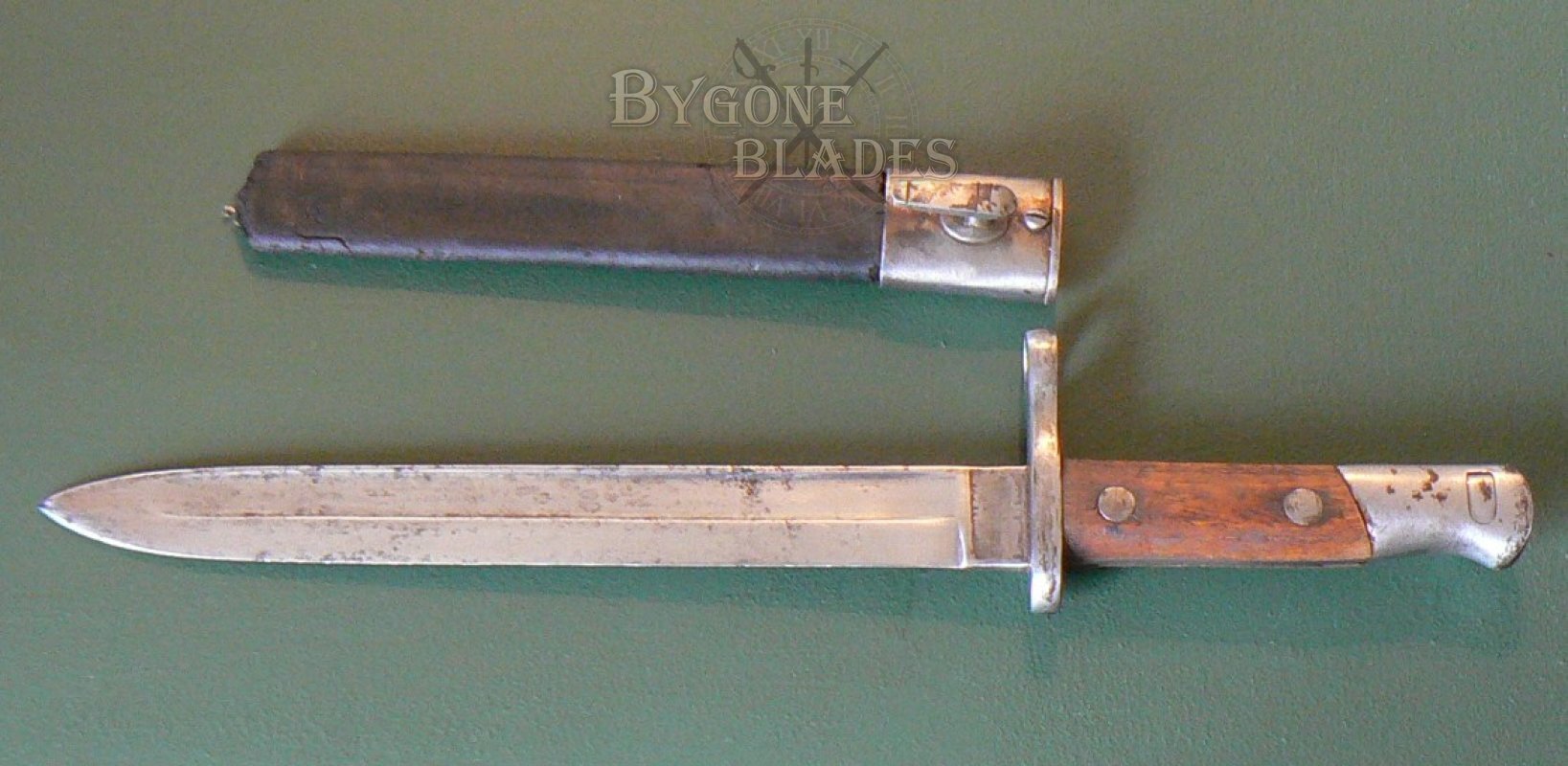
Spanish Mauser rifles that Uruguay purchased from FN. Perhaps, these were post-1896 production that Loewe mandated go to a German firm. Venezuela used the steel scabbard with their M1900 bayonet.Įxamples of this bayonet are also found maker-marked by the German firm, Alex Coppel. The scabbard's frog stud is unique and distinctive. These rifles and bayonets saw service during the 1897 revolution and 1904 civil war.īoth leather and steel scabbards were offered by FN, this being an example of the leather scabbard. These, too, were nearly-identical to the Spanish M1893 Mauser and did not have the mechanical improvements included on the true M1895 (e.g., Chilean) Mauser.Īccording to an article published by the Association of Friends of the Military Museums of the Army of Uruguay (AAMMEU), the rifles and bayonets were delivered in November 1896. Uruguay received 20,000 rifles, which they designated the Mauser Español-Brasilero Modelo 1895 (Spanish-Brazilian Mauser Model 1895). At that point, Loewe allowed FN to complete the Uruguay rifle contract, but prohibited further contracts. In February 1896, the German firm, Ludwig Loewe Co., obtained majority control of FN. Brazil designated the rifle M1894.įN began marketing the Spanish Mauser to other countries, although FN had no rights to produce the Mauser M1893 design. Brazil designated the rifle M1894, however, the Brazilian rifles were nearly-identical to the Spanish M1893 Mauser. It was developed when FN assisted Ludwig Loewe with production of Spanish Mauser rifles for Brazil (anticipating the ability to enter into additional contracts for the Spanish Mauser rifles).īrazil received 110,000 rifles, 20,000 of which were made by FN. The bayonet is patterned closely on the Belgian M1889 bayonet.
Spanish mauser bayonet how to#
If so, it is unclear how to distinguish between Brazilian and Uruguayan examples of this bayonet. This research also infers that they may also have been made for Brazil. Attribution of these bayonets to Uruguay was confirmed by research published in 2016 by Anthony Vanderlinden in his book, FN Mauser Rifles. Uruguayan documentation of this type uses Uruguay's designation, M1895. Janzen identifies this bayonet as the Uruguay M1894 based on an importer's statement. Spanish Mauser ( le Mauser espagnol) rifles made for export to Uruguay and Brazil. Knife bayonet for use with Fabrique Nacionale (FN) 7 mm. Ricasso: partial former marking overstamped with the British "sold from service" cancellation mark and "S" The other Mauser socket bayonet is the Spanish M1871/93, a conversion of the M1871 Remington rolling block socket bayonet used with the 7 mm. Both were conversions, there never being a socket bayonet actually designed for use with a Mauser. This bayonet is historically significant as one of only two socket bayonet types ever used with a Mauser rifle. The scabbard with this example was added by a collector, but is representative of the type originally procured by Uruguay. This scabbard type was used domestically by the Belgians with the M1867 Albini-Braendlin socket bayonet, as well as for export on bayonets such as this. The scabbard has a leather throat and body, with a steel ball finial.


The modifications are apparent in this comparison image. The locking ring is unique in that it is one solid piece, with no screw, simply pressed around the socket. (54 mm.) socket having a wide mortise and thin bridge. The conversion entailed replacing the Enfield socket with a much shorter 2.125 in. Some of these converted socket bayonets were also used by Japan on Mauser M1871 rifles. Although the socket bayonet lacks the formidable appearance of the German M1871 sword bayonet, it would have been a much less costly alternative. The British cancellation mark on the ricasso clearly shows that this example had prior service. The bayonet conversion work is believed to have been done by one of the Liege, Belgium arms producers. These rifles and bayonets saw service during the 1897 revolution and 1904 civil war. This converted British Pattern 1853 socket bayonet was part of the rifle procurement. The exact year of acquisition is unclear, but appears to have been ca. This bayonet is a conversion of the British Pattern 1853 Enfield socket bayonet.Īccording to an article published by the Association of Friends of the Military Museums of the Army of Uruguay (AAMMEU), Uruguay procured approximately 10,000 Mauser M1871 rifles.


 0 kommentar(er)
0 kommentar(er)
